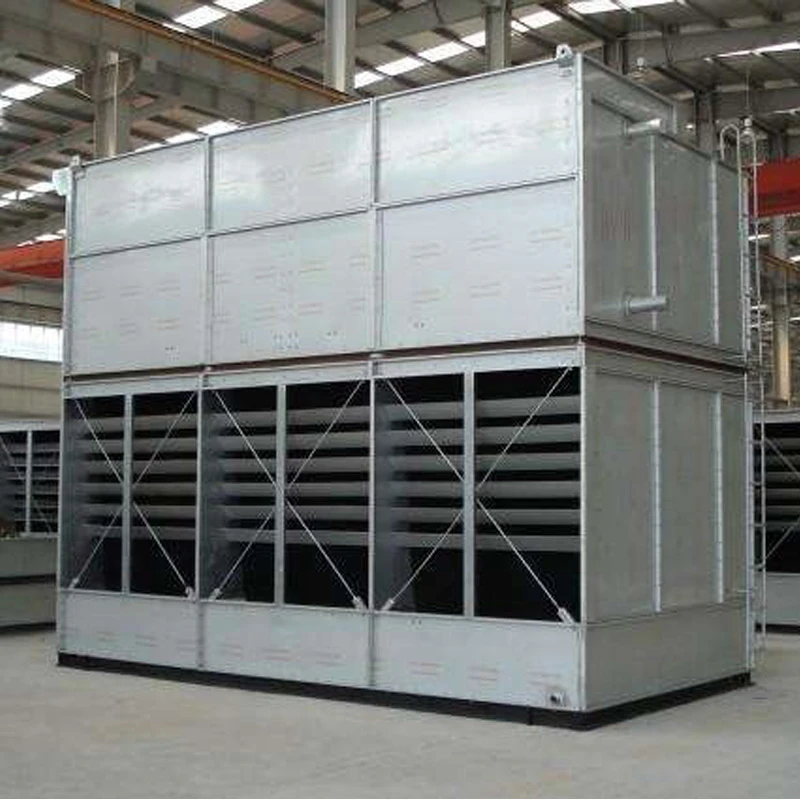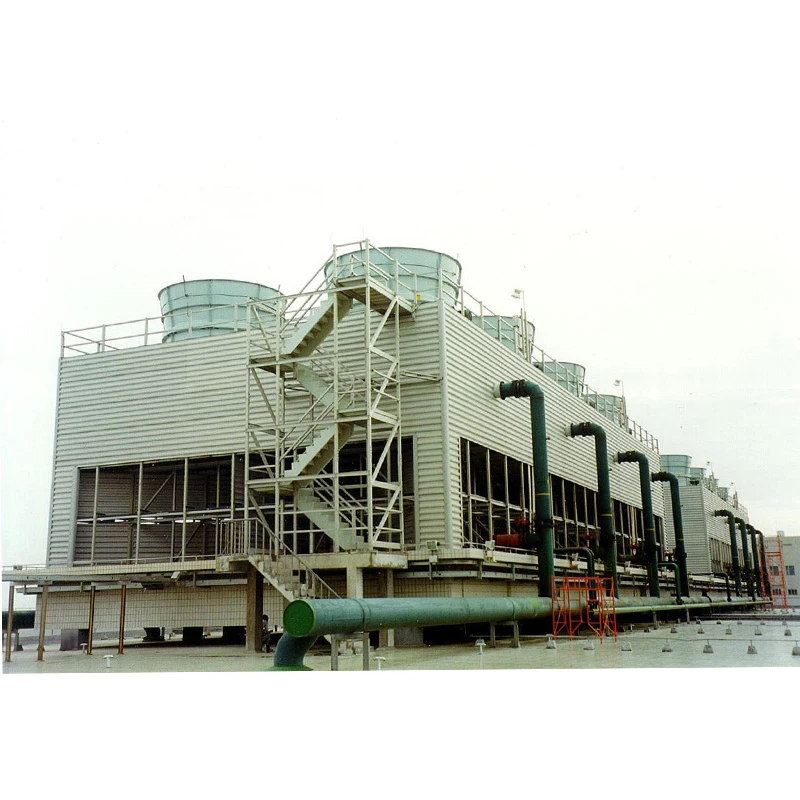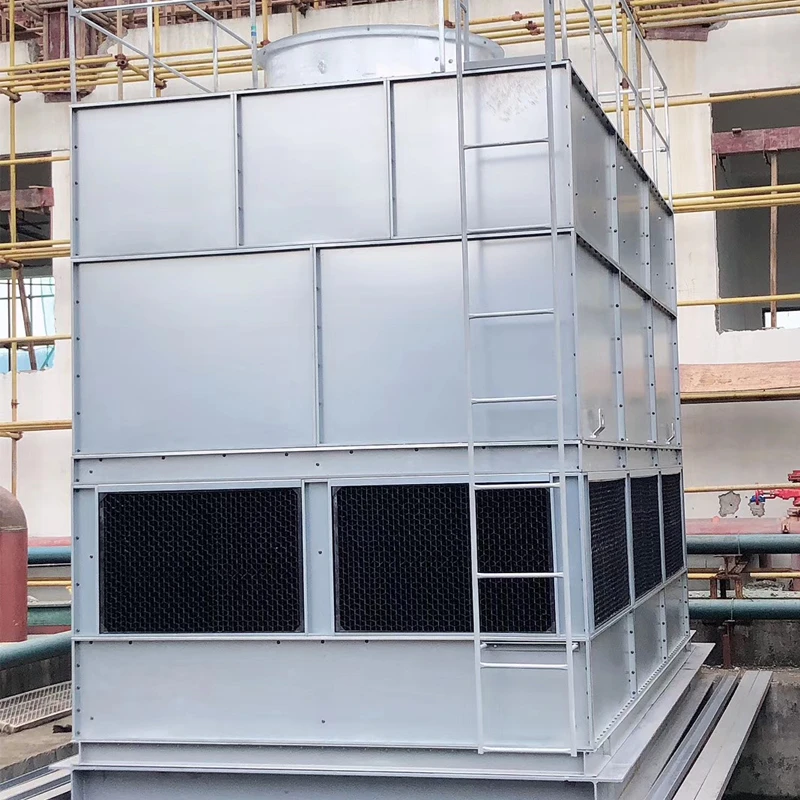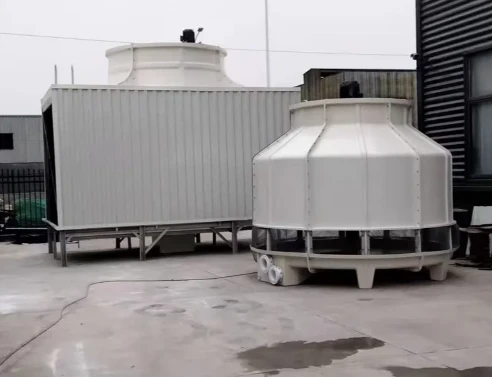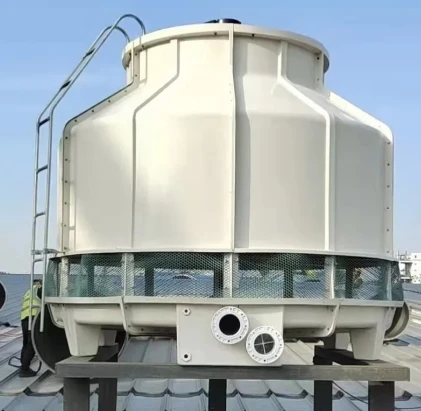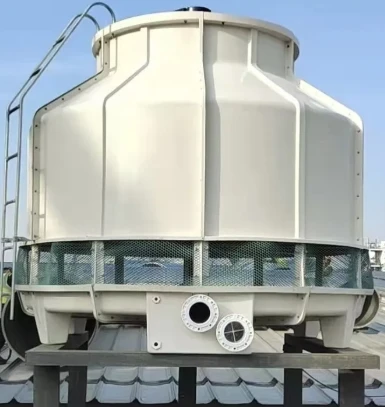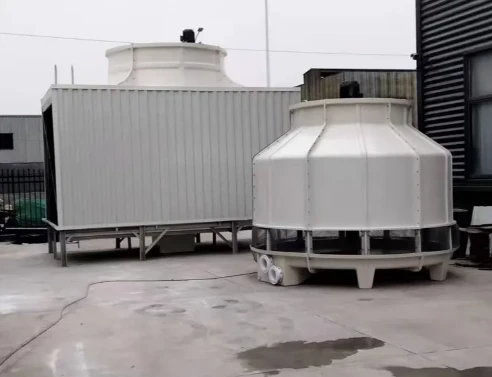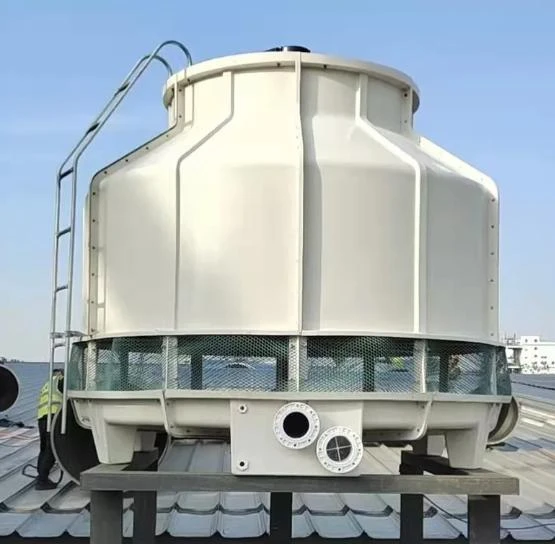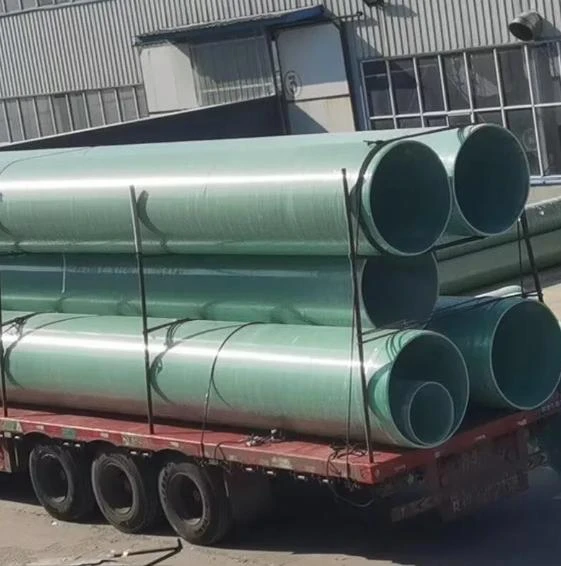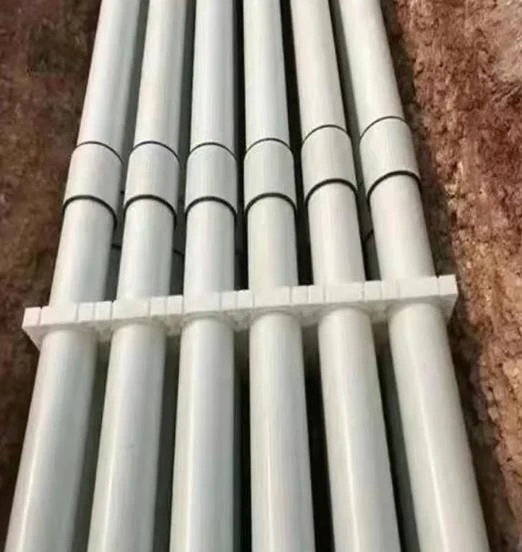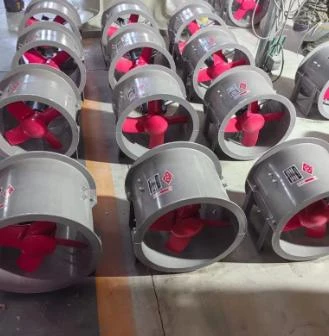

We Are Open 24 Hours a Day, 7 Days a Week, Including Weekends and Public Holidays.
In the relentless heartbeat of modern industry, maintaining optimal operating temperatures isn't just a convenience – it's an absolute necessity for efficiency, safety, and product quality. From massive power generation plants and sprawling chemical refineries to precision manufacturing lines and critical data centers, the removal of excess heat generated by processes and machinery is paramount. At the core of this vital thermal management function lies the indispensable cooling tower. Selecting the right cooling solution directly impacts operational costs, environmental footprint, and equipment longevity. This is where expertise, innovation, and robust materials make a defining difference.
Hebei Longxuan Environmental Protection Equipment Co., Ltd: Your Premier Partner in FRP Solutions
Strategically located in the industrial heartland of Hebei, China, Hebei Longxuan Environmental Protection Equipment Co., Ltd stands as a leading force in the research, development, production, and global export of high-performance Fiberglass Reinforced Plastic (FRP) products. Our unwavering commitment is to deliver engineered solutions that excel in demanding environments. Leveraging advanced manufacturing techniques and rigorously selected raw materials, we guarantee exceptional product quality, durability, and corrosion resistance – essential traits for equipment constantly battling moisture, chemicals, and thermal stress.
Our comprehensive portfolio extends beyond cooling towers to include FRP pipelines, gratings, fans, pultruded profiles, specialized environmental protection equipment, and bespoke fabrications. This breadth of capability allows us to address complex challenges across diverse sectors: industrial cooling, fluid transportation, structural platforms, and pollution control. At Hebei Longxuan, we understand that effective cooling is not a one-size-fits-all proposition. We focus on designing and manufacturing cooling tower systems that offer superior performance, remarkable resource savings, and long-term reliability, particularly championing the efficiency of closed cooling tower technology. Our solutions are engineered to meet the exacting demands of industries worldwide, ensuring processes run smoothly and sustainably.
Cooling Tower: The Heart of Industrial Cooling Systems
The cooling tower serves as the critical workhorse in dissipating unwanted heat from industrial processes. Fundamentally, it operates on the principle of evaporative cooling, though the specific mechanisms can vary. Warm water from an industrial process – perhaps heated by a chemical reaction, a compressor, a furnace, or high-speed machinery – is pumped to the cooling tower. Within the tower, this water is exposed to a stream of ambient air. A portion of the water evaporates, absorbing significant latent heat in the process, thereby cooling the remaining water substantially. This cooled water is then recirculated back to absorb more heat, creating a continuous cooling loop.
Industrial cooling tower systems come in various configurations, primarily categorized by how the process water interacts with the air:
Open Cooling Towers (Counterflow/Crossflow): The process water flows over fill media, maximizing surface area, while air is drawn upwards (counterflow) or horizontally (crossflow) through the water stream. The water is in direct contact with the air, facilitating efficient evaporation but also exposing it to airborne contaminants and increasing water loss and drift.
Closed Cooling Towers: These feature a heat exchanger coil (usually copper or stainless steel) through which the process fluid circulates in a completely sealed loop. Water is sprayed over the exterior of this coil. Air flowing across the coil and the spray water evaporatively cools the spray water, which in turn cools the process fluid inside the coil without ever contacting it. This design is crucial for protecting sensitive or expensive fluids.
Hybrid/Dry Cooling Towers: Primarily use air-cooled heat exchangers (like large radiators) but incorporate a water spray system activated only during peak ambient temperatures to boost cooling capacity via evaporative assistance.
The choice between these systems hinges critically on the application's requirements: the nature of the fluid being cooled (water, oil, chemical solution), required temperature range, water availability and quality, environmental regulations concerning drift and blowdown, and the criticality of protecting the process fluid from contamination or loss. Hebei Longxuan specializes in FRP structures for these systems, offering inherent advantages like exceptional corrosion resistance against aggressive cooling water chemistries and atmospheric conditions, structural strength-to-weight ratio allowing for larger capacities or easier installation, and longevity that reduces lifecycle costs. Our cooling towers are designed for cooling capacities ranging from 25 to 500 tons per hour (single cell), handling mediums like pure water, quenching oils, and hydraulic fluids with equal reliability.
Understanding Cooling Tower Systems and Their Efficiency
Modern industrial cooling tower systems are sophisticated assemblies far beyond just the tower structure. Key components include:
Tower Structure (FRP): The shell, basin, and often fan cylinders, providing the enclosure and structural support. Hebei Longxuan's FRP construction ensures decades of service life even in harsh chemical or marine environments.
Fill Media: Surfaces within the tower (in open or closed designs with spray) designed to maximize water-air contact time and surface area for efficient heat transfer. Materials range from PVC to specialized plastics.
Heat Exchanger Coil (Closed Towers): The sealed tube bundle where the process fluid is cooled, typically copper or stainless steel.
Drift Eliminators: Crucial components that capture entrained water droplets in the exhaust air, minimizing water loss and environmental impact.
Water Distribution System: Nozzles and piping that evenly distribute hot water over the fill (open) or spray water over the coil (closed).
Fan(s) and Drive System: Induced or forced draft fans (axial or centrifugal) that move the required air volume through the tower. Motors can be direct drive or belt-driven.
Cold Water Basin: Collects the cooled water for recirculation.
Intake Louvers: Control air entry, help distribute air evenly, and prevent splash-out.
Efficiency in cooling tower systems is measured by how effectively they approach the ambient wet-bulb temperature – the theoretical lowest temperature achievable by evaporative cooling. Key metrics include:
Range: The temperature difference between the hot water entering the tower and the cold water leaving it.
Approach: The difference between the cold water temperature leaving the tower and the ambient wet-bulb temperature. A smaller approach indicates a more efficient tower.
Cooling Capacity (T/h): The rate at which heat is rejected, typically measured in tons of refrigeration (where 1 ton = 12,000 BTU/hr) or kilowatts.
Hebei Longxuan's engineering focuses on maximizing efficiency at every level. Our closed cooling tower designs are inherently superior in several efficiency aspects compared to traditional open towers:
Water Conservation: By eliminating the evaporation of the primary process fluid and utilizing a separate, sealed loop, closed cooling towers drastically reduce makeup water requirements. Our designs achieve up to 50% water savings compared to equivalent open tower systems.
Energy Savings: Optimized airflow design, efficient fan selection, and the reduced pump head often required for the closed process loop contribute to significant energy reductions. Hebei Longxuan towers are proven to save 10% electricity compared to open tower counterparts.
Reduced Sewage/Blowdown: Because the process fluid is sealed and protected from airborne contamination and concentration cycles are minimized in the spray loop, the need for blowdown (water deliberately drained to control dissolved solids) is greatly reduced. This leads to a 50% reduction in sewage volume, lowering water treatment costs and environmental impact.
Reduced Chemical Treatment: The sealed process loop requires minimal, if any, water treatment chemicals, further lowering operating costs and environmental burden.
The Advantages of Closed Cooling Tower Technology
While open towers have their place, closed cooling tower technology offers compelling advantages that make it the superior choice for countless industrial applications, perfectly aligning with Hebei Longxuan's commitment to performance and sustainability:
Closed Circulation, Protected Water Quality: This is the paramount advantage. The process fluid (water, oil, chemical solution) circulates in a completely sealed loop through the heat exchanger coil. It never contacts the outside air or the spray water, eliminating risks of contamination from airborne dirt, debris, gases, or biological growth. This ensures water quality is not polluted, critical for sensitive processes like pharmaceutical manufacturing, food processing, or using expensive hydraulic oils and heat treatment fluids. It also prevents the escape of volatile or hazardous process fluids into the atmosphere.
Constant Cooling Water Temperature: The closed-loop design provides more stable process fluid temperatures. Fluctuations in ambient wet-bulb temperature have a less dramatic and slower impact on the sealed fluid temperature compared to the direct exposure in open towers, leading to more consistent process conditions and product quality.
Remarkable Water and Electricity Savings: As highlighted earlier, the effect of saving water and electricity is remarkable, with documented savings of 50% on water and 10% on power compared to open systems. This translates directly into substantial operational cost reductions and a smaller environmental footprint.
Anti-Clogging and Anti-Corrosion: The sealed process loop is inherently protected from airborne particulates that can clog strainers, nozzles, and heat exchangers in open systems. Hebei Longxuan's FRP construction of the tower shell and basin provides outstanding anti-corrosion properties, resisting degradation from aggressive cooling water treatments or atmospheric conditions far better than traditional materials like galvanized steel.
Simple Maintenance and Low Maintenance Cost: Protecting the primary process fluid from contamination drastically reduces fouling inside heat exchangers and process equipment. The external spray loop in a closed tower is simpler to maintain than the fill media in open towers, which is prone to scaling, fouling, and biological growth requiring regular cleaning or replacement. This leads to simple maintenance and low maintenance cost.
Wide Application Range: Closed cooling towers are incredibly versatile. They excel wherever process fluid purity is paramount, where fluids are expensive or hazardous, or where freeze protection is needed (by adding glycol to the sealed loop). Their suitability extends far beyond just cooling water.
Hebei Longxuan Closed Cooling Tower: Performance Parameters & Applications
|
Parameter |
Specification/Description |
|
Cooling Capacity |
25 - 500 Tons per Hour (Single Cell) |
|
Cooling Medium |
Pure Water, Quenching Liquid (Oils), Hydraulic Oil |
|
Key Advantages |
• Save 50% Water vs. Open Tower |
|
Primary Applications |
◆ Cooling of circulating water for reactors & condensers (Chemical Industry) |
FAQs About Cooling Towers
What are the main benefits of a closed cooling tower?
The core benefits revolve around protection and efficiency. Closed cooling towers ensure your valuable process fluid (water, oil, chemical) remains completely isolated and uncontaminated within a sealed loop. This directly protects sensitive processes and expensive fluids. Simultaneously, they deliver outstanding operational savings: reducing water consumption by up to 50%, cutting electricity use by 10%, and slashing sewage output by 50% compared to open towers. The FRP construction ensures exceptional corrosion resistance and longevity, minimizing maintenance costs and downtime.
How do cooling tower systems save water and energy?
Cooling tower systems save water primarily through efficient evaporation management and reduced blowdown. Our closed cooling tower design maximizes this by only evaporating water in the external spray loop, not the primary process fluid, drastically cutting makeup water needs. Energy savings stem from optimized aerodynamic designs reducing fan horsepower, efficient heat transfer surfaces requiring less pumping energy, and the inherent stability of the closed loop allowing for precise control. The combined effect of saving water and electricity is remarkable, significantly lowering your operating expenses.
Why choose a closed cooling tower for harsh environments?
Hebei Longxuan's closed cooling towers, built with robust Fiberglass Reinforced Plastic (FRP), are specifically engineered for harsh environments. FRP offers unparalleled anti-corrosion properties, resisting degradation from salt spray, chemical-laden atmospheres, aggressive water treatments, and UV exposure far better than metal structures. The sealed process loop also inherently protects against airborne contaminants like dust, sand, and corrosive gases that can rapidly degrade open systems and foul process equipment. This combination ensures reliable performance and long service life where other towers fail.
How does a cooling tower maintain temperature?
A cooling tower maintains the desired process fluid temperature through controlled evaporative cooling. Sensors monitor the outlet temperature of the sealed loop fluid in a closed cooling tower. The tower's control system modulates the fan speed (and sometimes the spray water pump) based on this reading and the ambient wet-bulb temperature. Increasing fan speed draws more air across the coil and spray water, enhancing evaporation and cooling when needed. The inherent stability of the closed loop helps maintain constant cooling water temperature more effectively than open systems, ensuring process consistency.
What maintenance does a closed cooling tower need?
Maintenance for a closed cooling tower focuses primarily on the external spray loop and mechanical components, making it simple maintenance and low maintenance cost. Key tasks include periodic inspection and cleaning of the spray nozzles to ensure even water distribution over the coil, checking and cleaning the sump screen, inspecting and lubricating fan bearings and motor drives, monitoring belt tension (if applicable), and ensuring water treatment (if used) in the spray loop is maintained. Crucially, the sealed process loop requires minimal intervention, as it remains protected from external fouling. Our FRP construction minimizes structural corrosion concerns.
In an era demanding heightened efficiency and environmental responsibility, selecting the right cooling solution is strategic. Closed cooling tower technology, particularly when engineered with the superior corrosion resistance and durability of FRP by Hebei Longxuan Environmental Protection Equipment Co., Ltd., represents a smart investment in operational stability, cost reduction, and sustainability. The compelling advantages – protecting valuable process fluids, achieving remarkable water and electricity savings, reducing environmental impact through lower sewage and chemical use, and ensuring long-term reliability with simple maintenance – make it the optimal choice for a vast array of demanding industrial applications.
Hebei Longxuan stands ready to be your trusted partner. We combine cutting-edge FRP manufacturing expertise with a deep understanding of thermal dynamics to deliver cooling tower systems that perform consistently, endure harsh conditions, and deliver tangible bottom-line benefits. From custom-engineered solutions to our high-performance standard range, we provide the technology and support to keep your critical processes running cool and efficient. Contact Hebei Longxuan today to explore how our advanced cooling towers can optimize your industrial cooling needs and contribute to a more sustainable, profitable operation. Let us help you turn cooling from a cost center into a competitive advantage.





Address
20 Xingyuan South Street, Zaoqiang County, Hengshui City, Hebei Province, China










